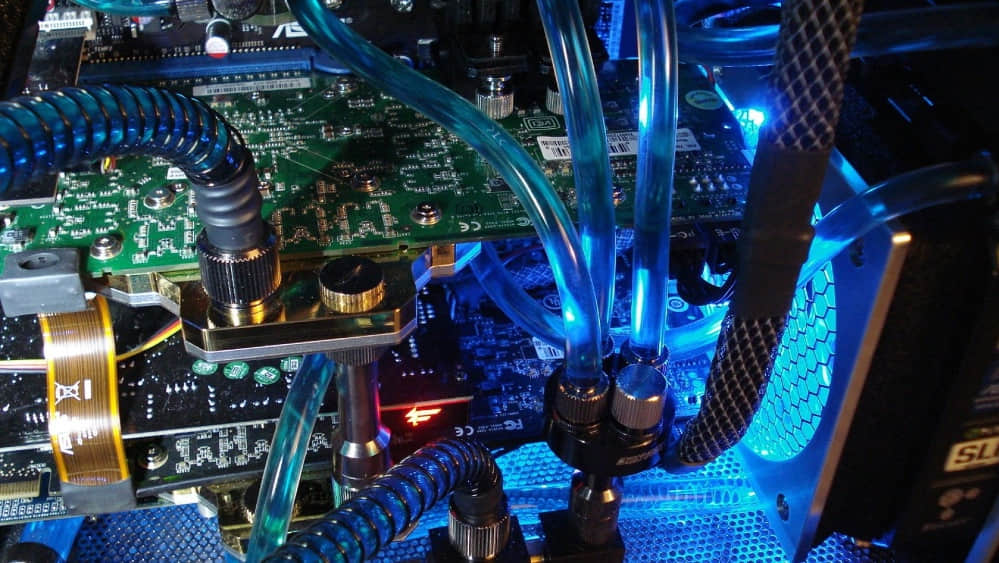
大多数人都知道 RHEL 的订阅 ,但是知道 Oracle 订阅及细节的人却很少。
甚至我也不知道关于它的信息,我是最近才了解了有关它的信息,想将这些内容共享给其他人。因此写了这篇文章,它将指导你去注册 Oracle Linux 系统去使用坚不可摧 Linux 网络(ULN) 。
这将允许你去注册系统以尽快获得软件更新和其它的补丁。
什么是坚不可摧 Linux 网络
ULN 代表 坚不可摧 Linux 网络 ,它是由 Oracle 所拥有的。如果你去 Oracle OS 支持中去激活这个订阅,你就可以注册你的系统去使用坚不可摧 Linux 网络(ULN)。
ULN 为 Oracle Linux 和 Oracle VM 提供软件补丁、更新、以及修复,这些信息同时提供在 yum、Ksplice、并提供支持策略。你也可以通过它来下载原始发行版中没有包含的有用的安装包。
ULN 的告警提示工具会周期性地使用 ULN 进行检查,当有更新的时候它给你发送警报信息。
如果你想在 yum 上使用 ULN 仓库去管理你的系统,需要确保你的系统已经注册到 ULN 上,并且订阅了一个或多个 ULN 频道。当你注册一个系统使用 ULN,它将基于你的系统架构和操作系统去自动选择频道中最新的版本。
如何注册为一个 ULN 用户
要注册为一个 ULN 用户,需要你有一个 Oracle Linux 支持或者 Oracle VM 支持的有效客户支持代码(CSI)。
请按以下步骤去注册为一个 ULN 用户。
请访问 linux.oracle.com:
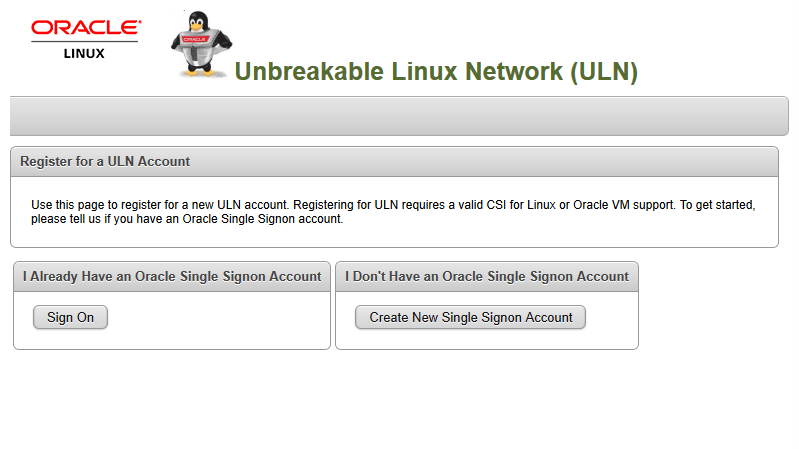
如果你已经有一个 SSO 帐户,请点击 “Sign On”。

如果你没有帐户,点击 “Create New Single Signon Account” 然后按屏幕上的要求去创建一个帐户。
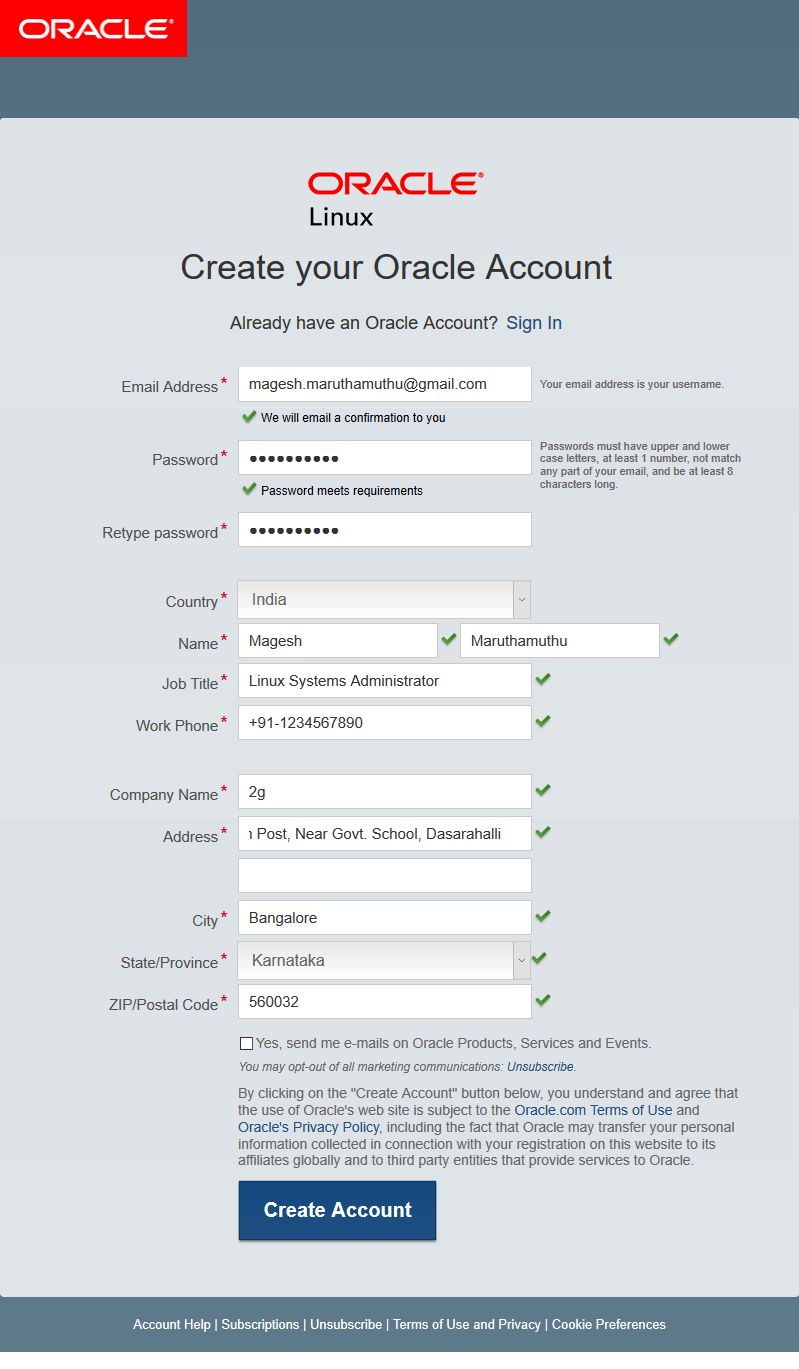
验证你的电子邮件地址以完成帐户设置。
使用你的 SSO 帐户的用户名和密码去登入。在 “Create New ULN User” 页面上,输入你的 CSI 然后点击 “Create New User”。
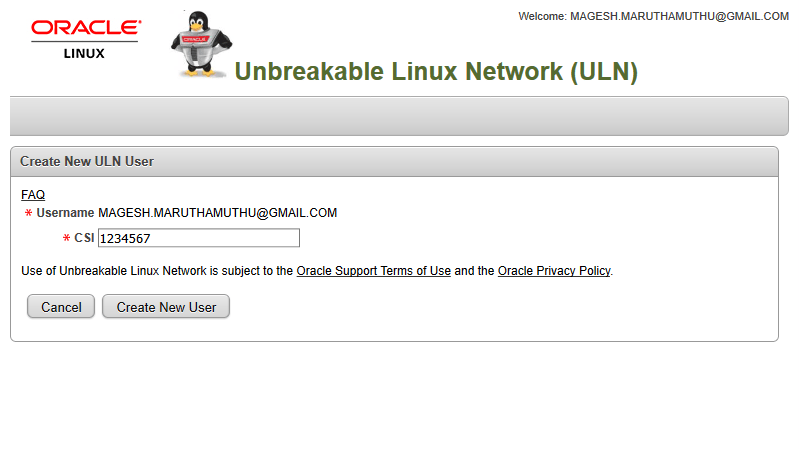
注意:
- 如果当前没有分配管理员去管理 CSI,将会提示你去点击确认让你成为 CSI 管理员。
- 如果你的用户名已经在系统上存在,你将被提示通过点击坚不可摧 Linux 网络的链接去操作 ULN。
如何注册 Oracle Linux 6/7 系统使用 ULN
只需要运行下列的命令,并按随后的指令提示去注册系统。
# uln_register
确保你的系统有一个激活的因特网连接。同时准备好你的 Oracle 单点登录帐户(SSO)的用户名和密码,然后点击 Next。
Copyright ▪© 2006--2010 Red Hat, Inc. All rights reserved.
▪▪▪▪▪▪▪▪▪▪▪▪▪▪▪▪▪▪▪▪▪▪▪▪▪▪▪▪▪▪▪▪▪▪▪▪▪▪▪▪▪▪▪▪▪▪▪▪▪▪▪▪▪¤ Setting up software updates ▪▪▪▪▪▪▪▪▪▪▪▪▪▪▪▪▪▪▪▪▪▪▪▪▪▪▪▪▪▪▪▪▪▪▪▪▪▪▪▪▪▪▪▪▪▪▪▪▪▪▪▪▪
▪ This assistant will guide you through connecting your system to Unbreakable Linux Network (ULN) to receive software updates, ▪
▪ including security updates, to keep your system supported and compliant. You will need the following at this time: ▪
▪ ▪
▪ * A network connection ▪
▪ * Your Oracle Single Sign-On Login & password ▪
▪ ▪
▪ ▪
▪ ▪
▪ ▪
▪ ▪
▪ ▪
▪ ▪
▪ ▪
▪ ▪▪▪▪▪▪▪▪▪▪▪▪▪▪▪▪▪▪▪▪▪▪▪▪▪▪▪▪▪▪▪▪▪▪▪▪ ▪▪▪▪▪▪▪▪ ▪▪▪▪▪▪▪▪▪▪ ▪
▪ ▪ Why Should I Connect to ULN? ... ▪ ▪ Next ▪ ▪ Cancel ▪ ▪
▪ ▪▪▪▪▪▪▪▪▪▪▪▪▪▪▪▪▪▪▪▪▪▪▪▪▪▪▪▪▪▪▪▪▪▪▪▪ ▪▪▪▪▪▪▪▪ ▪▪▪▪▪▪▪▪▪▪ ▪
▪ ▪
▪▪▪▪▪▪▪▪▪▪▪▪▪▪▪▪▪▪▪▪▪▪▪▪▪▪▪▪▪▪▪▪▪▪▪▪▪▪▪▪▪▪▪▪▪▪▪▪▪▪▪▪▪▪▪▪▪▪▪▪▪▪▪▪▪▪▪▪▪▪▪▪▪▪▪▪▪▪▪▪▪▪▪▪▪▪▪▪▪▪▪▪▪▪▪▪▪▪▪▪▪▪▪▪▪▪▪▪▪▪▪▪▪▪▪▪▪▪▪▪▪▪▪▪▪▪▪▪▪▪▪▪▪▪▪▪
输入你的 ULN 登录信息,然后点击 Next。
Copyright ▪© 2006--2010 Red Hat, Inc. All rights reserved.
▪▪▪▪▪▪▪▪▪▪▪▪▪▪▪▪▪▪▪▪▪▪▪▪▪▪▪▪▪▪▪▪▪▪▪▪▪▪▪▪▪▪▪▪▪▪▪▪▪▪▪▪▪¤ Setting up software updates ▪▪▪▪▪▪▪▪▪▪▪▪▪▪▪▪▪▪▪▪▪▪▪▪▪▪▪▪▪▪▪▪▪▪▪▪▪▪▪▪▪▪▪▪▪▪▪▪▪▪▪▪▪
▪ ▪
▪ Please enter your login information for Unbreakable Linux Network (http://linux.oracle.com/): ▪
▪ ▪
▪ ▪
▪ Oracle Single Sign-On Login: [email protected]_ ▪
▪ Password: **********__________ ▪
▪ CSI: 12345678____________ ▪
▪ Tip: Forgot your login or password? Visit: http://www.oracle.com/corporate/contact/getaccthelp.html ▪
▪ ▪
▪ ▪▪▪▪▪▪▪▪ ▪▪▪▪▪▪▪▪ ▪▪▪▪▪▪▪▪▪▪ ▪
▪ ▪ Next ▪ ▪ Back ▪ ▪ Cancel ▪ ▪
▪ ▪▪▪▪▪▪▪▪ ▪▪▪▪▪▪▪▪ ▪▪▪▪▪▪▪▪▪▪ ▪
▪ ▪
▪ ▪
▪▪▪▪▪▪▪▪▪▪▪▪▪▪▪▪▪▪▪▪▪▪▪▪▪▪▪▪▪▪▪▪▪▪▪▪▪▪▪▪▪▪▪▪▪▪▪▪▪▪▪▪▪▪▪▪▪▪▪▪▪▪▪▪▪▪▪▪▪▪▪▪▪▪▪▪▪▪▪▪▪▪▪▪▪▪▪▪▪▪▪▪▪▪▪▪▪▪▪▪▪▪▪▪▪▪▪▪▪▪▪▪▪▪▪▪▪▪▪▪▪▪▪▪▪▪▪▪▪▪▪▪▪▪▪▪
注册一个系统概要 – 硬件信息,然后点击 Next。
Copyright ▪© 2006--2010 Red Hat, Inc. All rights reserved.
▪▪▪▪▪▪▪▪▪▪▪▪▪▪▪▪▪▪▪▪▪▪▪▪▪▪▪▪▪▪▪▪▪▪▪▪▪▪▪▪▪▪▪▪▪▪¤ Register a System Profile - Hardware ▪▪▪▪▪▪▪▪▪▪▪▪▪▪▪▪▪▪▪▪▪▪▪▪▪▪▪▪▪▪▪▪▪▪▪▪▪▪▪▪▪▪▪▪▪▪
▪ ▪
▪ A Profile Name is a descriptive name that you choose to identify this ▪
▪ System Profile on the Unbreakable Linux Network web pages. Optionally, ▪
▪ include a computer serial or identification number. ▪
▪ Profile name: 2g-oracle-sys___________________________ ▪
▪ ▪
▪ [*] Include the following information about hardware and network: ▪
▪ Press to deselect the option. ▪
▪ ▪
▪ Version: 6 CPU model: Intel(R) Xeon(R) CPU E5-5650 0 @ 2.00GHz ▪
▪ Hostname: 2g-oracle-sys ▪
▪ CPU speed: 1199 MHz IP Address: 192.168.1.101 Memory: ▪
▪ ▪
▪ Additional hardware information including PCI devices, disk sizes and mount points will be included in the profile. ▪
▪ ▪
▪ ▪▪▪▪▪▪▪▪ ▪▪▪▪▪▪▪▪ ▪▪▪▪▪▪▪▪▪▪ ▪
▪ ▪ Next ▪ ▪ Back ▪ ▪ Cancel ▪ ▪
▪ ▪▪▪▪▪▪▪▪ ▪▪▪▪▪▪▪▪ ▪▪▪▪▪▪▪▪▪▪ ▪
▪ ▪
▪ ▪
▪▪▪▪▪▪▪▪▪▪▪▪▪▪▪▪▪▪▪▪▪▪▪▪▪▪▪▪▪▪▪▪▪▪▪▪▪▪▪▪▪▪▪▪▪▪▪▪▪▪▪▪▪▪▪▪▪▪▪▪▪▪▪▪▪▪▪▪▪▪▪▪▪▪▪▪▪▪▪▪▪▪▪▪▪▪▪▪▪▪▪▪▪▪▪▪▪▪▪▪▪▪▪▪▪▪▪▪▪▪▪▪▪▪▪▪▪▪▪▪▪▪▪▪▪▪▪▪▪▪▪
注册一个系统概要 – 包配置,然后点击 Next。
Copyright ▪© 2006--2010 Red Hat, Inc. All rights reserved.
▪▪▪▪▪▪▪▪▪▪▪▪▪▪▪▪▪▪▪▪▪▪▪▪▪▪▪▪▪▪▪▪▪▪▪▪▪▪▪▪▪▪▪▪▪▪¤ Register a System Profile - Packages ▪▪▪▪▪▪▪▪▪▪▪▪▪▪▪▪▪▪▪▪▪▪▪▪▪▪▪▪▪▪▪▪▪▪▪▪▪▪▪▪▪▪▪▪▪▪▪
▪ ▪
▪ RPM information is important to determine what updated software packages are relevant to this system. ▪
▪ ▪
▪ [*] Include RPM packages installed on this system in my System Profile ▪
▪ ▪
▪ You may deselect individual packages by unchecking them below. ▪
▪ [*] ConsoleKit-0.4.1-6.el6 ▪ ▪
▪ [*] ConsoleKit-libs-0.4.1-6.el6 ▪ ▪
▪ [*] ConsoleKit-x11-0.4.1-6.el6 ▪ ▪
▪ [*] DeviceKit-power-014-3.el6 ▪ ▪
▪ [*] GConf2-2.28.0-7.el6 ▪ ▪
▪ [*] GConf2-2.28.0-7.el6 ▪ ▪
▪ [*] GConf2-devel-2.28.0-7.el6 ▪ ▪
▪ [*] GConf2-gtk-2.28.0-7.el6 ▪ ▪
▪ [*] MAKEDEV-3.24-6.el6 ▪ ▪
▪ [*] MySQL-python-1.2.3-0.3.c1.1.el6 ▪ ▪
▪ [*] NessusAgent-7.0.3-es6 ▪ ▪
▪ [*] ORBit2-2.14.17-6.el6_8 ▪ ▪
▪ [*] ORBit2-2.14.17-6.el6_8 ▪ ▪
▪ [*] ORBit2-devel-2.14.17-6.el6_8 ▪ ▪
▪ [*] PackageKit-0.5.8-26.0.1.el6 ▪ ▪
▪ [*] PackageKit-device-rebind-0.5.8-26.0.1.el6 ▪ ▪
▪ [*] PackageKit-glib-0.5.8-26.0.1.el6 ▪ ▪
▪ ▪
▪ ▪▪▪▪▪▪▪▪ ▪▪▪▪▪▪▪▪ ▪▪▪▪▪▪▪▪▪▪ ▪
▪ ▪ Next ▪ ▪ Back ▪ ▪ Cancel ▪ ▪
▪ ▪▪▪▪▪▪▪▪ ▪▪▪▪▪▪▪▪ ▪▪▪▪▪▪▪▪▪▪ ▪
▪ ▪
▪ ▪
▪▪▪▪▪▪▪▪▪▪▪▪▪▪▪▪▪▪▪▪▪▪▪▪▪▪▪▪▪▪▪▪▪▪▪▪▪▪▪▪▪▪▪▪▪▪▪▪▪▪▪▪▪▪▪▪▪▪▪▪▪▪▪▪▪▪▪▪▪▪▪▪▪▪▪▪▪▪▪▪▪▪▪▪▪▪▪▪▪▪▪▪▪▪▪▪▪▪▪▪▪▪▪▪▪▪▪▪▪▪▪▪▪▪▪▪▪▪▪▪▪▪▪▪▪▪▪▪▪▪▪
按下 “Next” 去发送系统概要到 ULN。
Copyright ▪© 2006--2010 Red Hat, Inc. All rights reserved.
▪▪▪▪▪▪▪▪▪▪▪▪▪▪▪▪▪▪▪▪▪▪▪▪▪▪▪▪▪▪▪▪▪▪▪▪¤ Send Profile Information to Unbreakable Linux Network ▪▪▪▪▪▪▪▪▪▪▪▪▪▪▪▪▪▪▪▪▪▪▪▪▪▪▪▪▪▪▪▪▪▪▪▪▪
▪ ▪
▪ We are finished collecting information for the System Profile. ▪
▪ ▪
▪ Press "Next" to send this System Profile to Unbreakable Linux Network. Click "Cancel" and no information will be sent. You ▪
▪ can run the registration program later by typing `uln_register` at the command line. ▪
▪ ▪
▪ ▪▪▪▪▪▪▪▪ ▪▪▪▪▪▪▪▪ ▪▪▪▪▪▪▪▪▪▪ ▪
▪ ▪ Next ▪ ▪ Back ▪ ▪ Cancel ▪ ▪
▪ ▪▪▪▪▪▪▪▪ ▪▪▪▪▪▪▪▪ ▪▪▪▪▪▪▪▪▪▪ ▪
▪ ▪
▪ ▪
▪▪▪▪▪▪▪▪▪▪▪▪▪▪▪▪▪▪▪▪▪▪▪▪▪▪▪▪▪▪▪▪▪▪▪▪▪▪▪▪▪▪▪▪▪▪▪▪▪▪▪▪▪▪▪▪▪▪▪▪▪▪▪▪▪▪▪▪▪▪▪▪▪▪▪▪▪▪▪▪▪▪▪▪▪▪▪▪▪▪▪▪▪▪▪▪▪▪▪▪▪▪▪▪▪▪▪▪▪▪▪▪▪▪▪▪▪▪▪▪▪▪▪▪▪▪▪▪
发送概要到 ULN 是如下的一个过程。
Copyright ▪© 2006--2010 Red Hat, Inc. All rights reserved.
▪▪¤ Sending Profile to Unbreakable Linux Network ▪
▪ ▪
▪ 75% ▪
▪ ▪
▪▪▪▪▪▪▪▪▪▪▪▪▪▪▪▪▪▪▪▪▪▪▪▪▪▪▪▪▪▪▪▪▪▪▪▪▪▪▪▪▪▪▪▪▪▪▪▪▪▪
ULN 注册做完后,重新回顾系统订阅的详细情况。如果一切正确,然后点击 ok。
Copyright ▪© 2006--2010 Red Hat, Inc. All rights reserved.
▪▪▪▪▪▪▪▪▪▪▪▪▪▪▪▪▪▪▪▪▪▪▪▪▪▪▪▪▪▪▪▪▪▪▪▪▪▪▪▪▪▪▪▪▪▪▪▪▪▪▪¤ Review system subscription details ▪▪▪▪▪▪▪▪▪▪▪▪▪▪▪▪▪▪▪▪▪▪▪▪▪▪▪▪▪▪▪▪▪▪▪▪▪▪▪▪▪▪▪▪▪▪▪▪▪▪
▪ ▪
▪ ▪
▪ Note: yum-rhn-plugin has been enabled. ▪
▪ ▪
▪ Please review the subscription details below: ▪
▪ ▪
▪ Software channel subscriptions: ▪
▪ This system will receive updates from the following Unbreakable Linux Network software channels: ▪
▪ Oracle Linux 6 Latest (x86_64) ▪
▪ Unbreakable Enterprise Kernel Release 4 for Oracle Linux 6 (x86_64) ▪
▪ ▪
▪ Warning: If an installed product on this system is not listed above, you will not receive updates or support for that product. If ▪
▪ you would like to receive updates for that product, please visit http://linux.oracle.com/ and subscribe this system to the ▪
▪ appropriate software channels to get updates for that product. ▪
▪ ▪
▪ ▪
▪ ▪
▪ ▪
▪ ▪
▪ ▪
▪ ▪
▪ ▪▪▪▪▪▪ ▪
▪ ▪ OK ▪ ▪
▪ ▪▪▪▪▪▪ ▪
▪ ▪
▪ ▪
▪▪▪▪▪▪▪▪▪▪▪▪▪▪▪▪▪▪▪▪▪▪▪▪▪▪▪▪▪▪▪▪▪▪▪▪▪▪▪▪▪▪▪▪▪▪▪▪▪▪▪▪▪▪▪▪▪▪▪▪▪▪▪▪▪▪▪▪▪▪▪▪▪▪▪▪▪▪▪▪▪▪▪▪▪▪▪▪▪▪▪▪▪▪▪▪▪▪▪▪▪▪▪▪▪▪▪▪▪▪▪▪▪▪▪▪▪▪▪▪▪▪▪▪▪▪▪▪▪▪▪▪▪▪▪▪▪▪
最后点击 Finish 完成注册。
Copyright ▪© 2006--2010 Red Hat, Inc. All rights reserved.
▪▪▪▪▪▪▪▪▪▪▪▪▪▪▪▪▪▪▪▪▪▪▪▪▪▪▪▪▪▪▪▪▪▪▪▪▪▪▪▪▪▪▪▪▪▪▪¤ Finish setting up software updates ▪▪▪▪▪▪▪▪▪▪▪▪▪▪▪▪▪▪▪▪▪▪▪▪▪▪▪▪▪▪▪▪▪▪▪▪▪▪▪▪▪▪▪▪▪▪▪
▪ ▪
▪ You may now run 'yum update' from this system's command line to get the latest software updates from Unbreakable Linux Network. ▪
▪ You will need to run this periodically to get the latest updates. ▪
▪ ▪
▪ ▪▪▪▪▪▪▪▪▪▪ ▪
▪ ▪ Finish ▪ ▪
▪ ▪▪▪▪▪▪▪▪▪▪ ▪
▪ ▪
▪ ▪
▪▪▪▪▪▪▪▪▪▪▪▪▪▪▪▪▪▪▪▪▪▪▪▪▪▪▪▪▪▪▪▪▪▪▪▪▪▪▪▪▪▪▪▪▪▪▪▪▪▪▪▪▪▪▪▪▪▪▪▪▪▪▪▪▪▪▪▪▪▪▪▪▪▪▪▪▪▪▪▪▪▪▪▪▪▪▪▪▪▪▪▪▪▪▪▪▪▪▪▪▪▪▪▪▪▪▪▪▪▪▪▪▪▪▪▪▪▪▪▪▪▪▪▪▪▪▪▪▪▪▪
ULN 注册已经成功,为了从 ULN 中得到仓库,运行如下的命令。
# yum repolist
Loaded plugins: aliases, changelog, presto, refresh-packagekit, rhnplugin, security, tmprepo, ulninfo, verify, versionlock
This system is receiving updates from ULN.
ol6_x86_64_UEKR3_latest | 1.2 kB 00:00
ol6_x86_64_UEKR3_latest/primary | 35 MB 00:14
ol6_x86_64_UEKR3_latest 874/874
repo id repo name status
ol6_x86_64_UEKR3_latest Unbreakable Enterprise Kernel Release 3 for Oracle Linux 6 (x86_64) - Latest 874
ol6_x86_64_latest Oracle Linux 6 Latest (x86_64) 40,092
repolist: 40,966
另外,你也可以在 ULN 网站上查看到相同的信息。转到 System 标签页去查看已注册的系统列表。

去查看已经启用的仓库列表。转到 System 标签页,然后点击相应的系统。另外,你也能够看到系统勘误及可用更新。

去管理订阅的频道。转到 System 标签页,然后点击有关的 system name,最后点击 Manage Subscriptions。
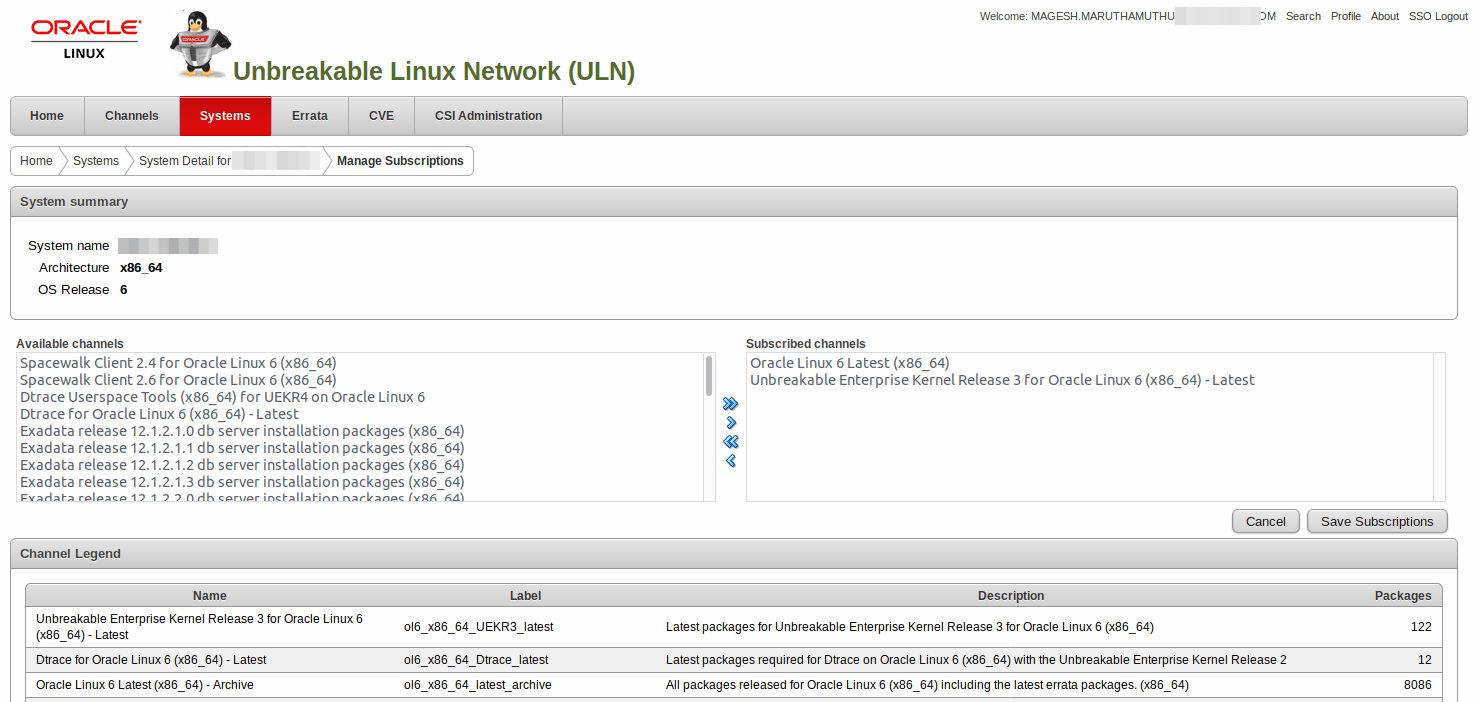
via: https://www.2daygeek.com/how-to-register-the-oracle-linux-system-with-the-unbreakable-linux-network-uln/
作者:Vinoth Kumar 选题:lujun9972 译者:qhwdw 校对:wxy
本文由 LCTT 原创编译,Linux中国 荣誉推出

